Idea by
Claudia Walton
Afterbodies
https://2020.rca.ac.uk/students/claudia-walton
Call for ideas 2021
Cautionary Colours of a Vulnerable Ecology
Cautionary Colours of a Vulnerable Ecology
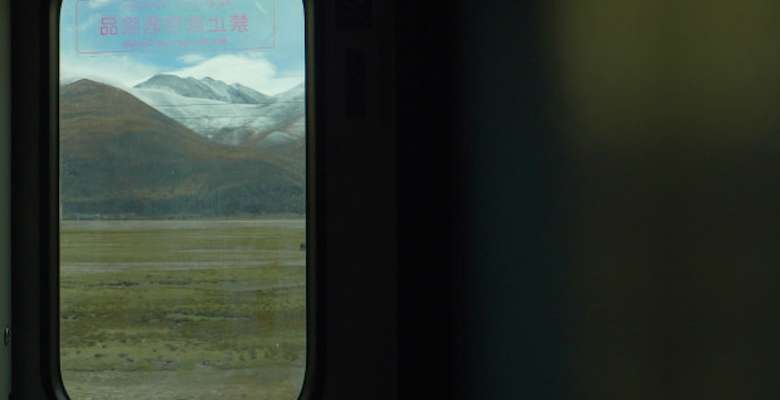
- Site-specific cases
Set out from the point of view of a passenger traveling from Beijing to Tibet by rail, the appropriation of the Tibetan landscape is explored through narratives of colour. The journey is seen as a propaganda machine, promoting the engineering masterplan allowing industry to explode in the region. The passenger is marketed the journey as a seamless transition from the greys and browns of polluted Chinese cities to the pure blue skies of the plateau. But the colours of a landscape are fragile and finite resources. Extracting them as marketing tools to promote an increase in industry accelerates their degradation. Collage works as a form of analysis but also a way of intervening. Deconstructing and repositioning the journey as stage sets to expose the exploitation of the landscape has a specific purpose to propose something that can truly be experienced. The intention is to design through a narrative structure in order to facilitate a spatial experience for passengers taking the journey.
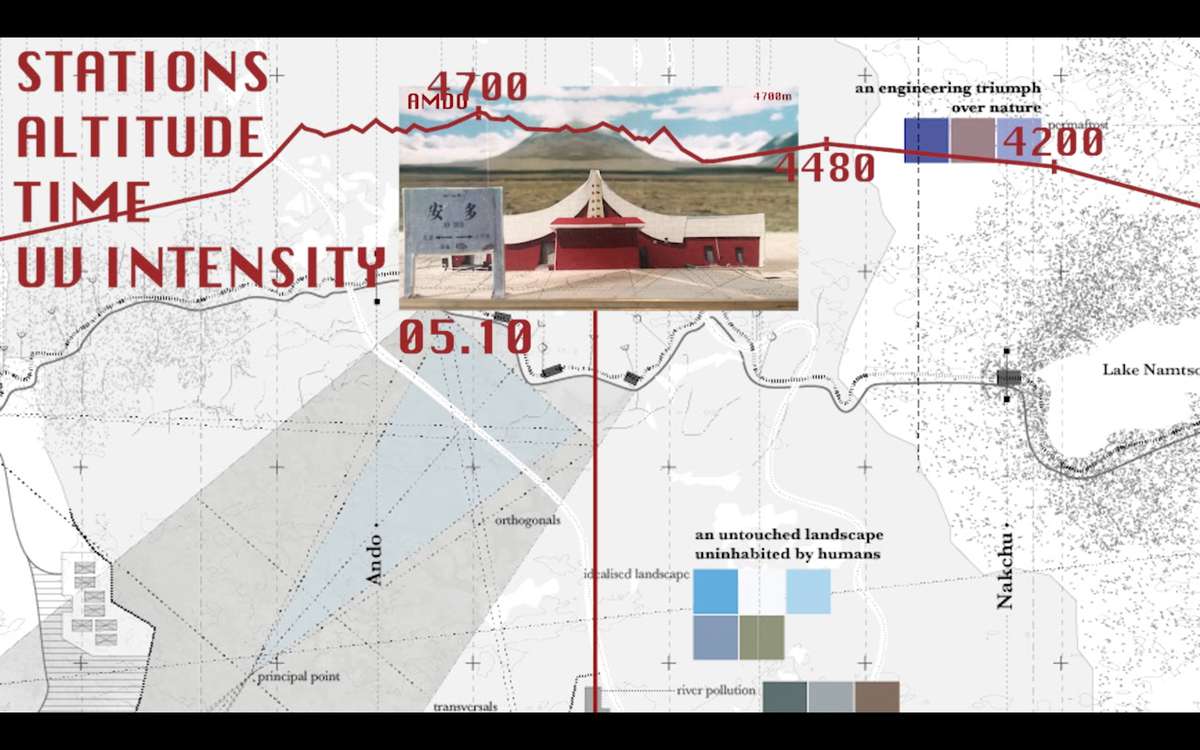
From the Great floods of 4000 years ago to current cloud seeding attempts, the ability to control the colour of the sky, or the movement of water, has long been used as a political tool and consequent symbol of power. Examples of weather management and manipulation along the Beijing/Lhasa railroad are spatially arranged whilst also building a library of colour.
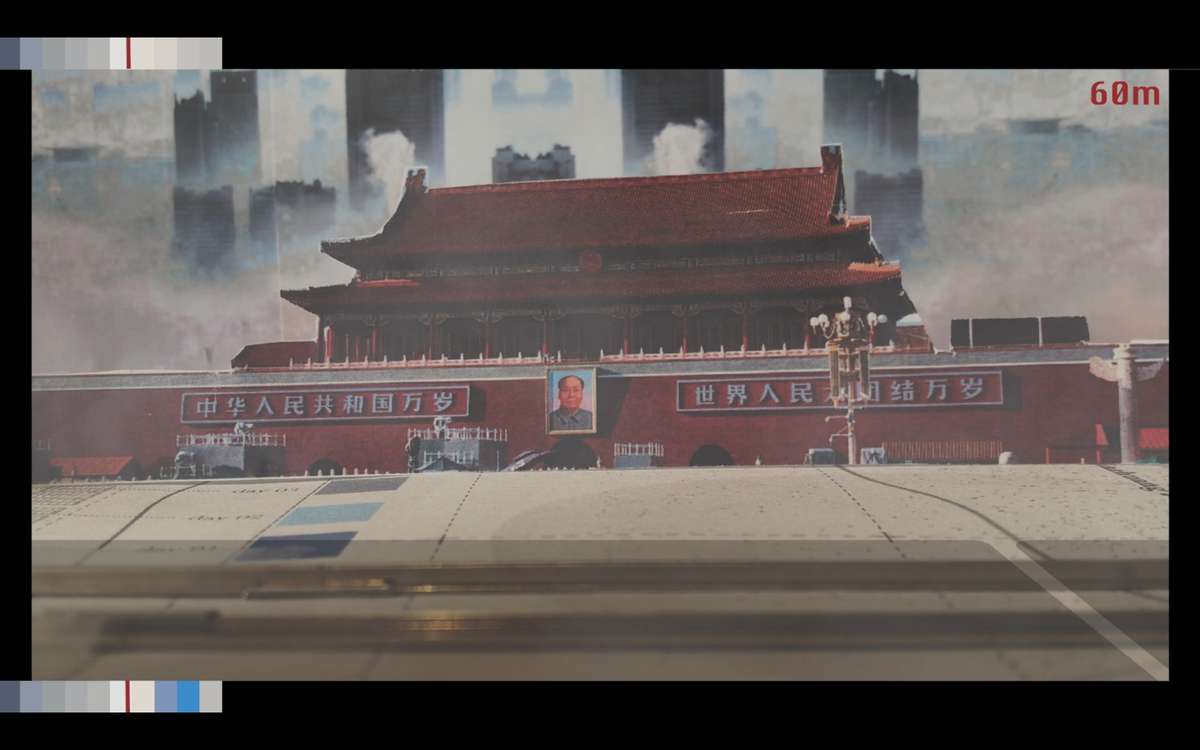
The colour of the sky can symbolise political power. For example, in Beijing, Factories are ordered to halt production in the days before a big event to ensure a blue sky.

All along the railway to Tibet, purity and colour appear as a method of propaganda, either as a political ideal or as a marketing strategy. Building a library of the extraction and appropriation of colour is then used to build the film sets.
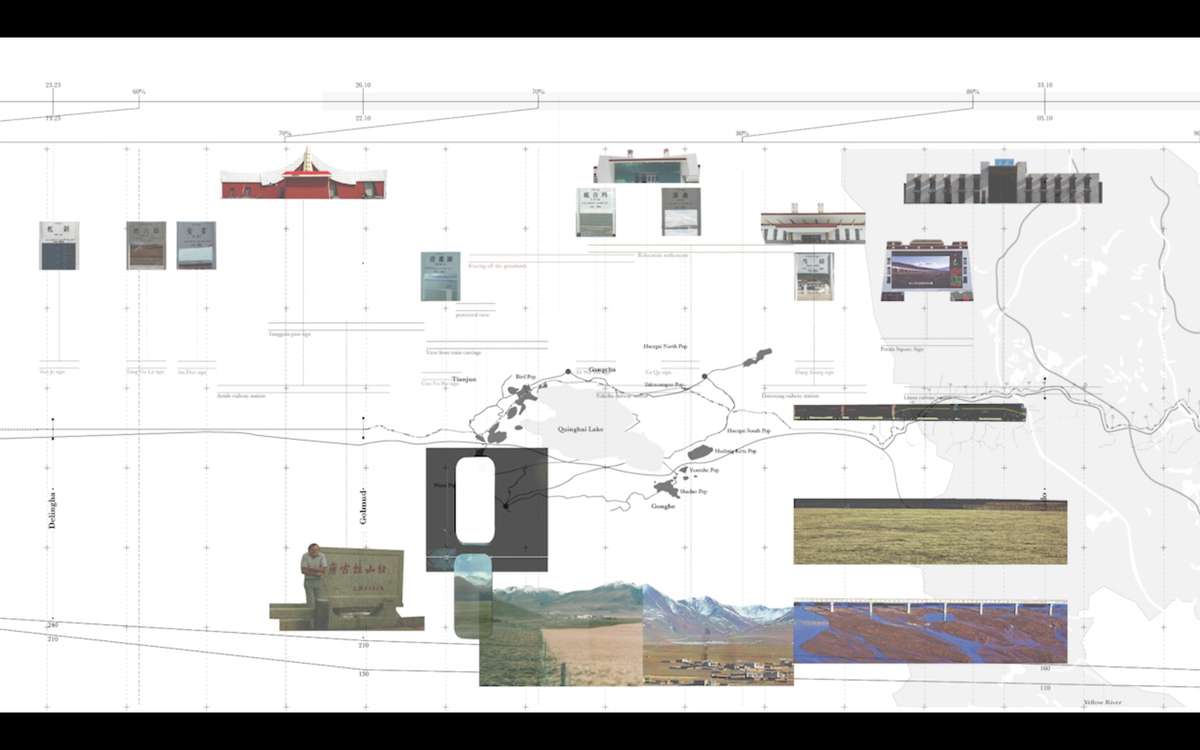
Producing scaled drawings of the railway line allows an understanding from afar of how the architecture of the stations, the highlighted views and the interior of the train are all designed infrastructures that operate as a machine to view the landscape from a certain framing. The extraction of colour, the narrative of purity and the illusion of smoothness are the 3 drivers of the project.
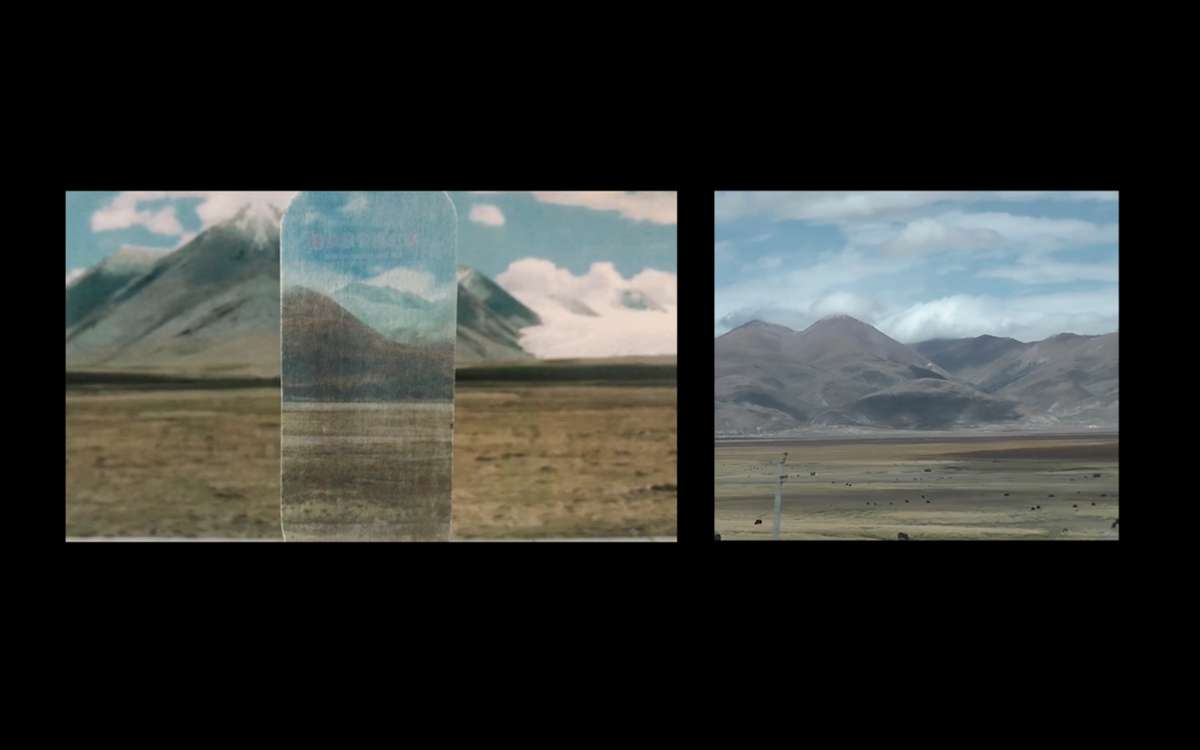
Collage works as a form of analysis but also a way of intervening. All of the images are constructed from real footage, mapping the current architectural language of the train journey. Authoring the collages allows me to suggest possibilities and highlight certain elements of the landscape, allowing them to fail and be exposed. These representations of the space have been cut into, remade and repositioned. Cinematic and still collage reinstate a series of events as proposals.
Cautionary Colours of a Vulnerable Ecology
Cautionary Colours of a Vulnerable Ecology

- Site-specific cases
Set out from the point of view of a passenger traveling from Beijing to Tibet by rail, the appropriation of the Tibetan landscape is explored through narratives of colour. The journey is seen as a propaganda machine, promoting the engineering masterplan allowing industry to explode in the region. The passenger is marketed the journey as a seamless transition from the greys and browns of polluted Chinese cities to the pure blue skies of the plateau. But the colours of a landscape are fragile and finite resources. Extracting them as marketing tools to promote an increase in industry accelerates their degradation. Collage works as a form of analysis but also a way of intervening. Deconstructing and repositioning the journey as stage sets to expose the exploitation of the landscape has a specific purpose to propose something that can truly be experienced. The intention is to design through a narrative structure in order to facilitate a spatial experience for passengers taking the journey.
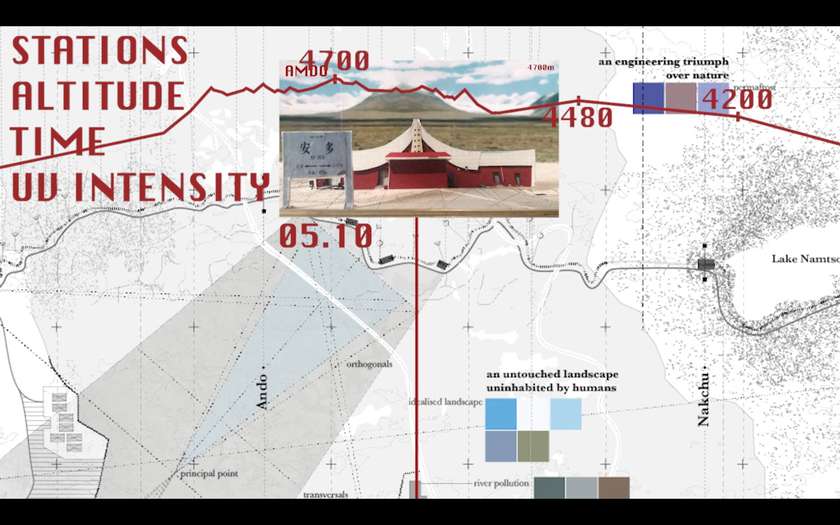
From the Great floods of 4000 years ago to current cloud seeding attempts, the ability to control the colour of the sky, or the movement of water, has long been used as a political tool and consequent symbol of power. Examples of weather management and manipulation along the Beijing/Lhasa railroad are spatially arranged whilst also building a library of colour.
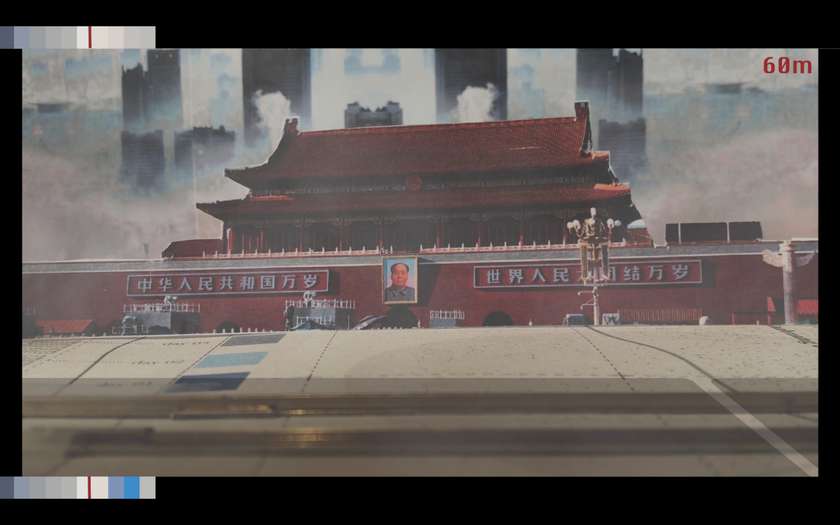
The colour of the sky can symbolise political power. For example, in Beijing, Factories are ordered to halt production in the days before a big event to ensure a blue sky.
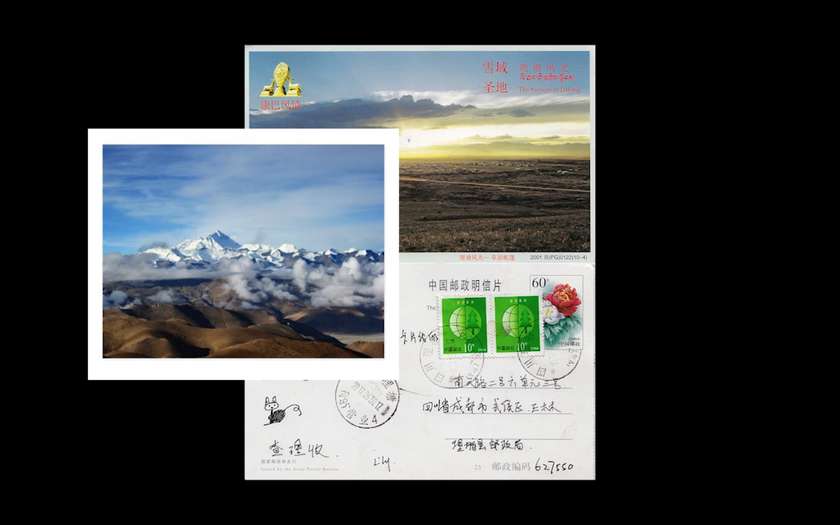
All along the railway to Tibet, purity and colour appear as a method of propaganda, either as a political ideal or as a marketing strategy. Building a library of the extraction and appropriation of colour is then used to build the film sets.
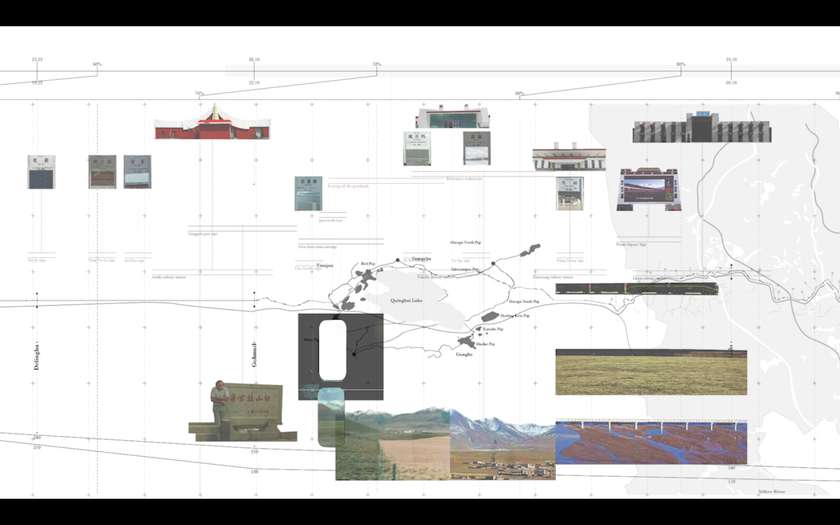
Producing scaled drawings of the railway line allows an understanding from afar of how the architecture of the stations, the highlighted views and the interior of the train are all designed infrastructures that operate as a machine to view the landscape from a certain framing. The extraction of colour, the narrative of purity and the illusion of smoothness are the 3 drivers of the project.

Collage works as a form of analysis but also a way of intervening. All of the images are constructed from real footage, mapping the current architectural language of the train journey. Authoring the collages allows me to suggest possibilities and highlight certain elements of the landscape, allowing them to fail and be exposed. These representations of the space have been cut into, remade and repositioned. Cinematic and still collage reinstate a series of events as proposals.